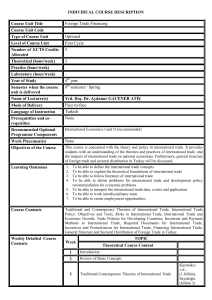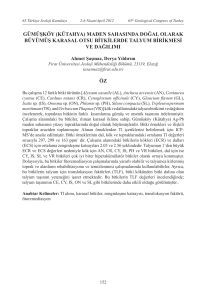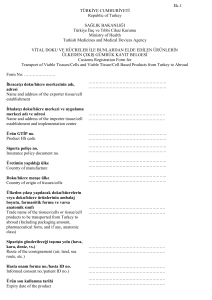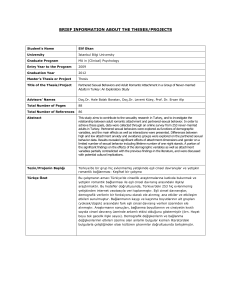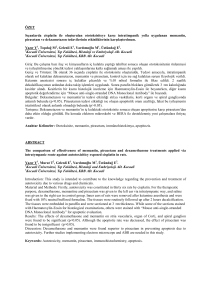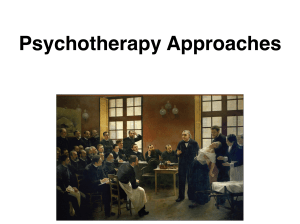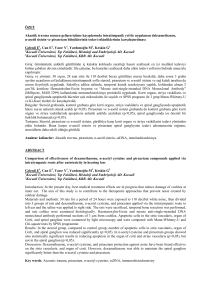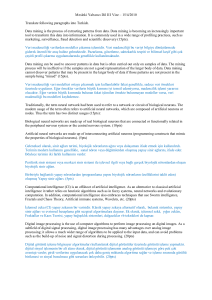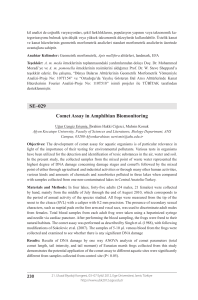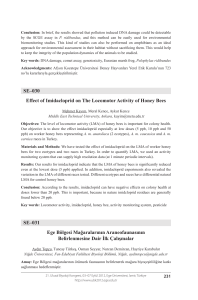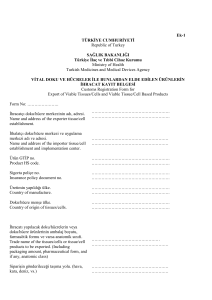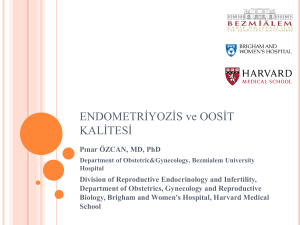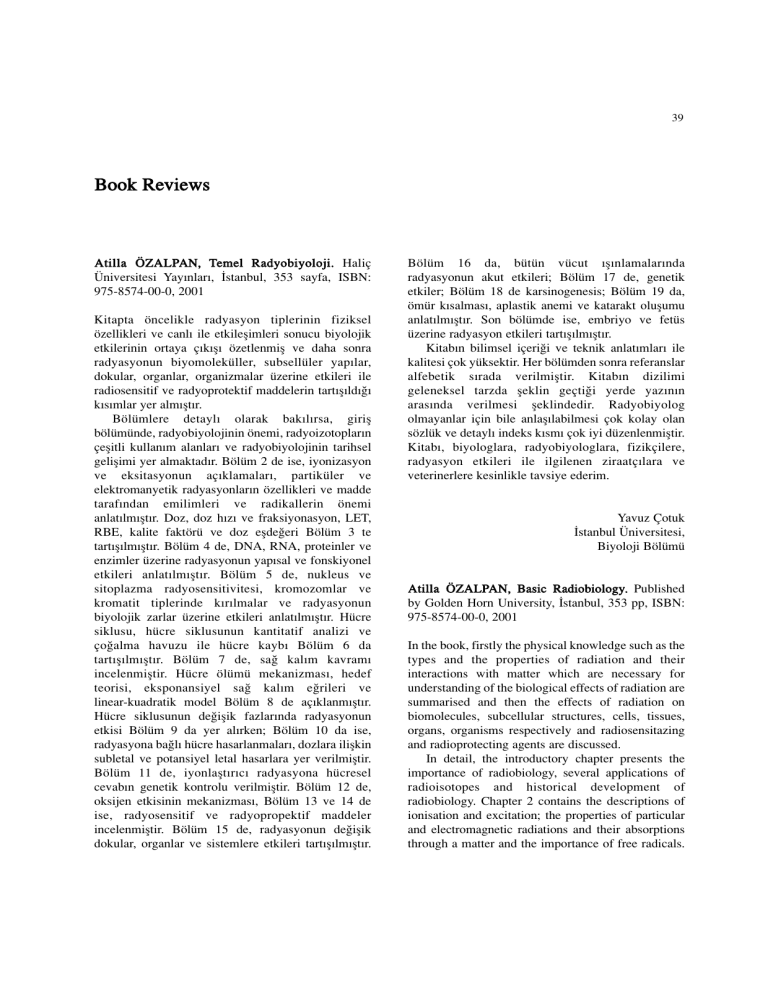
39
Book Reviews
Atilla ÖZALPAN, Temel Radyobiyoloji. Haliç
Üniversitesi Yay›nlar›, ‹stanbul, 353 sayfa, ISBN:
975-8574-00-0, 2001
Kitapta öncelikle radyasyon tiplerinin fiziksel
özellikleri ve canl› ile etkileflimleri sonucu biyolojik
etkilerinin ortaya ç›k›fl› özetlenmifl ve daha sonra
radyasyonun biyomoleküller, subsellüler yap›lar,
dokular, organlar, organizmalar üzerine etkileri ile
radiosensitif ve radyoprotektif maddelerin tart›fl›ld›¤›
k›s›mlar yer alm›flt›r.
Bölümlere detayl› olarak bak›l›rsa, girifl
bölümünde, radyobiyolojinin önemi, radyoizotoplar›n
çeflitli kullan›m alanlar› ve radyobiyolojinin tarihsel
geliflimi yer almaktad›r. Bölüm 2 de ise, iyonizasyon
ve eksitasyonun aç›klamalar›, partiküler ve
elektromanyetik radyasyonlar›n özellikleri ve madde
taraf›ndan emilimleri ve radikallerin önemi
anlat›lm›flt›r. Doz, doz h›z› ve fraksiyonasyon, LET,
RBE, kalite faktörü ve doz eflde¤eri Bölüm 3 te
tart›fl›lm›flt›r. Bölüm 4 de, DNA, RNA, proteinler ve
enzimler üzerine radyasyonun yap›sal ve fonskiyonel
etkileri anlat›lm›flt›r. Bölüm 5 de, nukleus ve
sitoplazma radyosensitivitesi, kromozomlar ve
kromatit tiplerinde k›r›lmalar ve radyasyonun
biyolojik zarlar üzerine etkileri anlat›lm›flt›r. Hücre
siklusu, hücre siklusunun kantitatif analizi ve
ço¤alma havuzu ile hücre kayb› Bölüm 6 da
tart›fl›lm›flt›r. Bölüm 7 de, sa¤ kal›m kavram›
incelenmifltir. Hücre ölümü mekanizmas›, hedef
teorisi, eksponansiyel sa¤ kal›m e¤rileri ve
linear-kuadratik model Bölüm 8 de aç›klanm›flt›r.
Hücre siklusunun de¤iflik fazlar›nda radyasyonun
etkisi Bölüm 9 da yer al›rken; Bölüm 10 da ise,
radyasyona ba¤l› hücre hasarlanmalar›, dozlara iliflkin
subletal ve potansiyel letal hasarlara yer verilmifltir.
Bölüm 11 de, iyonlaflt›r›c› radyasyona hücresel
cevab›n genetik kontrolu verilmifltir. Bölüm 12 de,
oksijen etkisinin mekanizmas›, Bölüm 13 ve 14 de
ise, radyosensitif ve radyopropektif maddeler
incelenmifltir. Bölüm 15 de, radyasyonun de¤iflik
dokular, organlar ve sistemlere etkileri tart›fl›lm›flt›r.
Bölüm 16 da, bütün vücut ›fl›nlamalar›nda
radyasyonun akut etkileri; Bölüm 17 de, genetik
etkiler; Bölüm 18 de karsinogenesis; Bölüm 19 da,
ömür k›salmas›, aplastik anemi ve katarakt oluflumu
anlat›lm›flt›r. Son bölümde ise, embriyo ve fetüs
üzerine radyasyon etkileri tart›fl›lm›flt›r.
Kitab›n bilimsel içeri¤i ve teknik anlat›mlar› ile
kalitesi çok yüksektir. Her bölümden sonra referanslar
alfebetik s›rada verilmifltir. Kitab›n dizilimi
geleneksel tarzda fleklin geçti¤i yerde yaz›n›n
aras›nda verilmesi fleklindedir. Radyobiyolog
olmayanlar için bile anlafl›labilmesi çok kolay olan
sözlük ve detayl› indeks k›sm› çok iyi düzenlenmifltir.
Kitab›, biyologlara, radyobiyologlara, fizikçilere,
radyasyon etkileri ile ilgilenen ziraatç›lara ve
veterinerlere kesinlikle tavsiye ederim.
Yavuz Çotuk
‹stanbul Üniversitesi,
Biyoloji Bölümü
Atilla ÖZALPAN, Basic Radiobiology. Published
by Golden Horn University, ‹stanbul, 353 pp, ISBN:
975-8574-00-0, 2001
In the book, firstly the physical knowledge such as the
types and the properties of radiation and their
interactions with matter which are necessary for
understanding of the biological effects of radiation are
summarised and then the effects of radiation on
biomolecules, subcellular structures, cells, tissues,
organs, organisms respectively and radiosensitazing
and radioprotecting agents are discussed.
In detail, the introductory chapter presents the
importance of radiobiology, several applications of
radioisotopes and historical development of
radiobiology. Chapter 2 contains the descriptions of
ionisation and excitation; the properties of particular
and electromagnetic radiations and their absorptions
through a matter and the importance of free radicals.
40
The concepts of dose, dose rate and fractionation,
LET, RBE, quality factor and dose equivalent are
explained in Chapter 3. Chapter 4 discusses the
structural and functional effects of radiation on
DNA, RNA, proteins and enzymes. Chapter 5
presents the radiosensitivity of nucleus and
cytoplasm, chromosome and chromatid type
aberrations and the effect of radiation on biological
membranes. Cell cycle, quantitative analysis of cell
cycle, growth fraction and cell loss discussed in
Chapter 6. Chapter 7 discusses the survival cell
concept. Mechanism of cell death, target theory,
exponential survival curves and linear-quadratic
model are presented in Chapter 8. In Chapter 9,
radiation’s effects on the different phases of cell
cycle; in Chapter 10, radiation damages on cell, repair
of sublethal and potentially lethal damages and dose
rate effect; in Chapter 11, genetic control of cellular
response to ionising radiation; in Chapter 12, the
mechanism of oxygen effect; in Chapter 13
and 14, radiosensitizers and radioprotectors are
discussed. Chapter 15 relates to the radiation’s effect
on different tissues, organs and systems. In Chapter
16, acute effects of whole-body irradiation; in
Chapter 17, genetic changes; in Chapter 18,
carcinogenesis; in Chapter 19, life shortening,
aplastic anaemia and cataract formation; in Chapter
20, effects of radiation on the embryo and fetus are
discussed.
In general, the quality of both the scientific
contents of the book and the technical aspects of
production of the book appears to be superior. The
authors referenced after each chapter in alphabetical
order. The layout of the book has a traditional format
in that figures and tables have been integrated into the
text at appropriate places. The glossary and the
detailed subject index at the end of the last chapter
are valuable parts of this publication for
non-radiobiologist. I would recommend this book
wholeheartedly for the biologist, physicians,
agriculturists and veterinarians who apply radiation
on living organisms for several purposes.
Yavuz Çotuk
‹stanbul University,
Department of Biology
Narçin PALAVAN-ÜNSAL, Bitki Hormonlar›
Laboratuar Uygulamalar›. Haliç Üniversitesi
Yay›nlar›, ‹stanbul, 52 sayfa. ISBN: 975-8574-02-7,
2001.
Bitki hormonlar›n›n etki flekilleri son y›llarda en
fazla çal›fl›lan konulardan birisidir. D›fltan uygulanan
bitkisel hormonlar bitkilerde çok bariz de¤iflimler
meydana getirirler. Bu hormonlar›n bitkiler
üzerindeki fizyolojik etkilerini bir hikaye fleklinde
anlatmak, çok do¤ru bir yaklafl›m de¤ildir. Bu amaçla
Bitki Hormonlar› Laboratuar Uygulamalar› adl›
kitap, bitkisel hormonlar›n genel etkilerini
ö¤rencilere gösterme aç›s›ndan iyi seçilmifl
deneylerden oluflmaktad›r. Ayr›ca bu deneylerin
yap›lmas› için özel malzemelere ihtiyaç duyulmamas›
da söz konusu kitab›n en önemli özelliklerindendir.
Deneylerin anlat›m›nda kullan›lan malzemeler ve
deneyin yap›l›fl› ayr›nt›l› olarak verilmifl, sonuçlar›n
kaydedilmesi için de özel yerler ve tablolar
sunulmufltur. Ayr›ca baz› anlat›mlar flekillerle
desteklenmifltir.
Bir yar› y›lda rahatl›kla yap›labilecek say›da
deneyden oluflan (13 deney) bu kitab›n ö¤retmen ve
ö¤rencilere bitkilerin büyüme ve geliflmesi
konusunda uygulamal› bilgiler kazand›rma aç›s›ndan
çok yararl› bir rehber olaca¤› görüflündeyim.
Türkiye’de bu alanlarda kaynak olacak son derece
s›n›rl› say›da eser oldu¤undan, bu kitab›n biyoloji ve
iliflkili alanlarda kullan›lmas›n› tavsiye ederim.
As›m KADIO⁄LU
Karadeniz Teknik Üniversitesi,
Biyoloji Bölümü
Narçin PALAVAN-ÜNSAL, Manual of Practices of
Plant Growth Regulators Laboratory. Published by
Golden Horn University, ‹stanbul, 52 pp, ISBN: 9758574-02-7, 2001.
Recently one of the most investigated topics is the
effective mechanism of plant growth regulators on
plants. In the results of exogenic application of
growth regulators to plants, important changes may
occur in plants. It is not a good way to give
information, without practices, about physiological
effects of growth regulators. For this purpose, the
41
manual named Practices of Plant Growth
Regulators Laboratory is contain obvious
experiments about main effects of growth regulators.
In addition, to perform the experiments necessary
simple tools can be found in all biological
laboratories. This is also another good characteristic
of the manual.
Materials and experimental design have been
given in detail. To record the results of each
experiments, it has been given special tables and
gapes. Explanation of some experiments is also
supported by figures.
The manual is composed of 13 experiments and
they are enough for a semester. The manual is a good
guide for students and teachers because it contains
selected experiments about development and growth
of plants.
Finally, this book is a unique sample because there
are very limited documents in this area in Turkey, for
this reason I recommend to the undergraduate
students in biology and other related branches.
As›m KADIO⁄LU
Karadeniz Technical University,
Department of Biology
Mehmet BABAO⁄LU, Ekrem GÜREL, Selahattin
ÖZCAN (Ed), Bitki Biyoteknolojisi I-Doku
Kültürü ve Uygulamalar›; Bitki Biyoteknolojisi IIGenetik Mühendisli¤i ve Uygulamalar›. Selçuk
Üniversitesi Vakf› Yay›nlar›, Konya, 374 ve 456
sayfa. ISBN: 975-6652-03-9 ve 975-6652-05-5, 2001.
Bitki Biyoteknolojisi kitab›n›n haz›rlanmas› ile;
biyoloji, ziraat, orman ve eczac›l›k alanlar›ndaki
lisans ve lisansüstü ö¤renciler ile yine bu alanlarda
çal›flan araflt›rmac›lara yard›mc› olunmas› ve bitki
biyoteknolojisinin ülkemizde geliflmesine katk›
sa¤lanmas› hedeflenmifltir. Bu amaçla, kitab›n her bir
bölümü o alandaki uzman kifli veya gruplar taraf›ndan
kaleme al›narak, en güncel ve uygulamaya yönelik
bilgiler verilmeye çal›fl›lm›flt›r. Dolay›s› ile, bu
kitaplar gerek bu flekilde çok yazarl› olarak
haz›rlanmas›, gerekse kufle ka¤›da renkli ve sert
kapak olarak bas›lmas› aç›s›ndan ülkemizde, en
az›ndan bu alanda, bir ilki de temsil etmektedirler.
Doku Kültürü ve Uygulamalar› konular›n› içeren
birinci cilt, toplam 11 bölüm ve 374 sayfadan
oluflmaktad›r. Bu bölümler, doku kültürü: temel
laboratuvar teknikleri, organogenesis, somatik
embriyogenesis, protoplast kültürü ve somatik
melezleme, haploit bitki üretimi, sekonder metabolit
üretimi, mikroço¤alt›m, germplasm muhafazas›,
embriyo kültürü ve somaklonal varyasyon bafll›klar›n›
tafl›maktad›rlar.
Genetik Mühendisli¤i ve Uygulamalar› adl› ikinci
cilt ise, toplam 16 bölüm ve 456 sayfadan
oluflmaktad›r. Bu bölümler, DNA n›n moleküler
yap›s› ve kromozomlar, genlerin moleküler yap›lar›
ve protein sentezi, gen izolasyonu ve klonlamas›,
Agrobacterium arac›l›¤› ile gen transferi, do¤rudan
gen aktar›m teknikleri, herbisitlere dayan›kl›
transgenik bitkilerin üretilmesi, böceklere dayan›kl›
transgenik bitkilerin üretilmesi, virüslere dayan›kl›
transgenik bitkilerin üretilmesi, hastal›klara
dayan›kl›l›¤›n artt›r›lmas›, bitkilerde strese
dayan›kl›l›k fizyolojisi, erkek k›s›r bitkilerin üretimi,
genetik markörler ve analiz metotlar›, proteinler ve
protein mühendisli¤i, antisens RNA teknolojisi,
teknoloji koruma sistemi (Terminatör teknolojisi) ve
biyoteknolojinin ahlaki ve hukuki boyutlar›
bafll›klar›n› tafl›maktad›rlar.
Çimen ATAK
Haliç Üniversitesi,
Moleküler Biyoloji ve Genetik Bölümü
Mehmet BABAO⁄LU, Ekrem GÜREL, Selahattin
ÖZCAN (Ed), Plant Biotechnology I-Tissue
Culture and Applications; Plant Biotechnology IIGenetic Engineering and Applications. Published
by Selçuk Üniversitesi Vakf›, Konya, 374 and 456 pp.
ISBN: 975-6652-03-9 ve 975-6652-05-5, 2001.
The aim of the preparation of the Plant
Biotechnology book was to make a contribution to the
improvement of the plant biotechnology in our
country and to be helpful for the researchers working
in these fields and for graduate and post-graduate
students in biology, agriculture, forestry and
pharmacology fields. With this aim, each section of
the book was prepared by an expert or groups in that
field and so the most current and suitable data for the
application were tried to be given. Consequently,
42
these books represent the first ones in this field in our
country whether in view of being prepared by many
writers in this manner or being printed on the colored
glazed paper as hard cover.
The first volume containing the issues of the
Tissue Culture and Applications consisted of 11
sections and 374 pages in total: tissue culture: basic
laboratory techniques, organgenesis, somatic
embryogenesis, protoplast culture and somatic
hybridisation, haploid plant production, production of
virus free plants, productions of secondary
metabolites, micropropagation, germplasm preservation,
embryo culture and somaclonal variation.
Second volume titled Genetic Engineering and
Applications consisted of 16 sections and 456 pages
in total: molecular structure of DNA and
chromosomes, molecular structure of genes and
protein synthesis, gene isolation and cloning, gene
transfer from Agrobacterium, direct gene transfer
techniques, production of herbicide resistant
transgenic plants, production of insect resistant
transgenic plants, production of virus resistant
transgenic plants, increased disease resistance,
resistance physiology to stress in plants, production of
male sterile plants, genetics markers and
analysis methods, protein and protein engineering,
antisense RNA technology, technology protection
system (Terminator technology) and ethical and legal
scopes of biotechnology.
Çimen ATAK
Golden Horn University,
Department of Molecular Biology and Genetics

